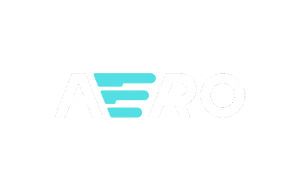6 November 2024
SEO vs SEM: What’s Their Differences?
In today’s online world, getting noticed is a big deal. That’s where SEO (Search Engine Optimization) and SEM (Search Engine Marketing) come in. These two strategies help businesses show up when people search online. But what’s the difference between them? Let’s break it down!
Key Takeaways
| SEO | SEM |
|---|---|
| Free organic traffic | Paid traffic + organic efforts |
| Long-term strategy | Immediate results |
| Builds trust and authority | Targets specific keywords |
| Ongoing optimization | Budget-dependent |
Understanding SEO and SEM: The Basics
SEO is all about making your website easy to find without paying for ads. It’s like making your website a magnet for search engines. SEM, on the other hand, includes SEO plus paid ads. It’s like putting up a big, flashy sign to get attention fast.
Both SEO and SEM are super important for businesses trying to get noticed online. They work together to help you reach more people who are looking for what you offer. While SEO focuses on improving your website’s visibility in organic search results, SEM encompasses a broader range of tactics, including paid advertising, to increase your online presence.
Key Differences at a Glance
Key Differences: SEO vs SEM
- SEO: Free but takes time; SEM: Costs money but faster results
- SEO: Long-lasting results; SEM: Results stop when you stop paying
- SEO: Good for informational searches; SEM: Great for buying-related searches
- SEO: Needs patience and ongoing work; SEM: Needs constant management and budget
What is SEO?
SEO is like making your website the best book in the library. It helps search engines like Google find and show your site to people looking for what you offer. There are three main parts to SEO:
- On-page SEO: Making your website’s content awesome
- Off-page SEO: Getting other websites to talk about you
- Technical SEO: Making sure your website works smoothly
When done right, SEO can bring more visitors to your site without paying for each click. It’s great for building trust and showing you’re an expert in your field. SEO involves optimizing various elements of your website, including content, meta tags, site structure, and backlinks, to improve its relevance and authority in the eyes of search engines.
What is SEM?
SEM is like having a megaphone in the digital world. It includes both SEO and paid ads (PPC or Pay-Per-Click). With SEM, you can:
- Show up at the top of search results right away
- Target specific words people are searching for
- Control exactly what your ad says
- Reach a highly targeted audience based on demographics, interests, and search behavior
SEM campaigns work fast and can be great for new businesses or special promotions. You pay each time someone clicks on your ad, but you get to choose how much you spend. SEM allows for precise targeting and immediate visibility, making it an effective tool for driving quick traffic and conversions.
SEO vs SEM: The Big Showdown
SEO vs SEM Comparison
SEM
When to Use SEO
SEO is perfect when you want to:
- Build your brand over time
- Become known as an expert in your field
- Get found for questions people ask about your products or services
- Save money in the long run
- Establish a sustainable online presence
Local businesses can really benefit from SEO, helping them show up when people nearby are searching. SEO is particularly effective for businesses looking to build long-term authority and visibility in their industry. It’s ideal for companies with a limited marketing budget but who can invest time in creating quality content and optimizing their website.
When to Use SEM
SEM shines when you need:
- Quick results for a new product or service
- To target people ready to buy
- To test different ads to see what works best
- To support your SEO efforts
- Immediate visibility in competitive markets
It’s great for businesses that want to see fast results or have products that are hard to rank for with just SEO. SEM is particularly useful for e-commerce businesses, companies entering new markets, or those promoting time-sensitive offers. It allows for precise targeting and quick adjustments based on performance data.
Combining SEO and SEM for Maximum Impact
Using both SEO and SEM together can be super powerful. It’s like having a strong defense and a quick offense in sports. Here’s why it works:
- You show up in both paid and free search results
- You can use SEM data to improve your SEO
- SEO helps lower your SEM costs over time
- You create a comprehensive online presence
- You can target different stages of the customer journey
A well-designed website that’s optimized for both SEO and SEM can really boost your online presence. By leveraging both strategies, you can create a synergistic effect that enhances your overall digital marketing performance. SEO provides a strong foundation for long-term growth, while SEM offers flexibility and immediate results for short-term goals.
Choosing the Right Strategy for Your Business
Picking between SEO and SEM depends on your business goals. Think about:
Budget
Consider available funds for marketing
Time Frame
How quickly you need results
Target Audience
Who you’re trying to reach
Competition
Analyze your market competitors
It’s often best to use both, but the balance will depend on your specific needs. A good web development team can help you figure out the right mix. Consider your industry, target audience behavior, and business objectives when deciding on the allocation of resources between SEO and SEM. A balanced approach often yields the best results, allowing you to capture both short-term gains and long-term growth.
Wrapping Up: The Power of SEO and SEM
Both SEO and SEM are crucial tools in digital marketing. SEO builds a strong foundation for long-term success, while SEM provides quick wins and targeted reach. By understanding and using both, you can create a powerful online presence that attracts more customers and grows your business.
Remember, the digital world is always changing. Staying up-to-date with the latest data and trends is key to success. Whether you’re just starting out or looking to improve your current strategy, considering both SEO and SEM can help you reach your goals. Regularly analyzing your performance and adjusting your strategies accordingly will ensure that your digital marketing efforts remain effective in the ever-evolving online landscape.
Want to see how businesses have succeeded with these strategies? Check out our case studies for real-world examples of SEO and SEM in action. These case studies provide valuable insights into how different businesses have leveraged SEO and SEM to achieve their marketing objectives and overcome specific challenges in their industries.
Ready to boost your online presence? Whether you need help with SEO, SEM, or both, our team at Seek Social is here to help. Let’s work together to create a digital marketing strategy that gets results! Our experts can analyze your current online presence, identify opportunities for improvement, and develop a tailored strategy that combines the strengths of both SEO and SEM to maximize your digital marketing ROI.






